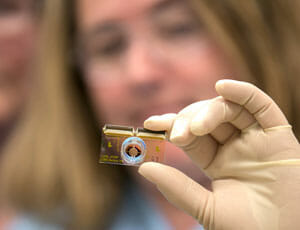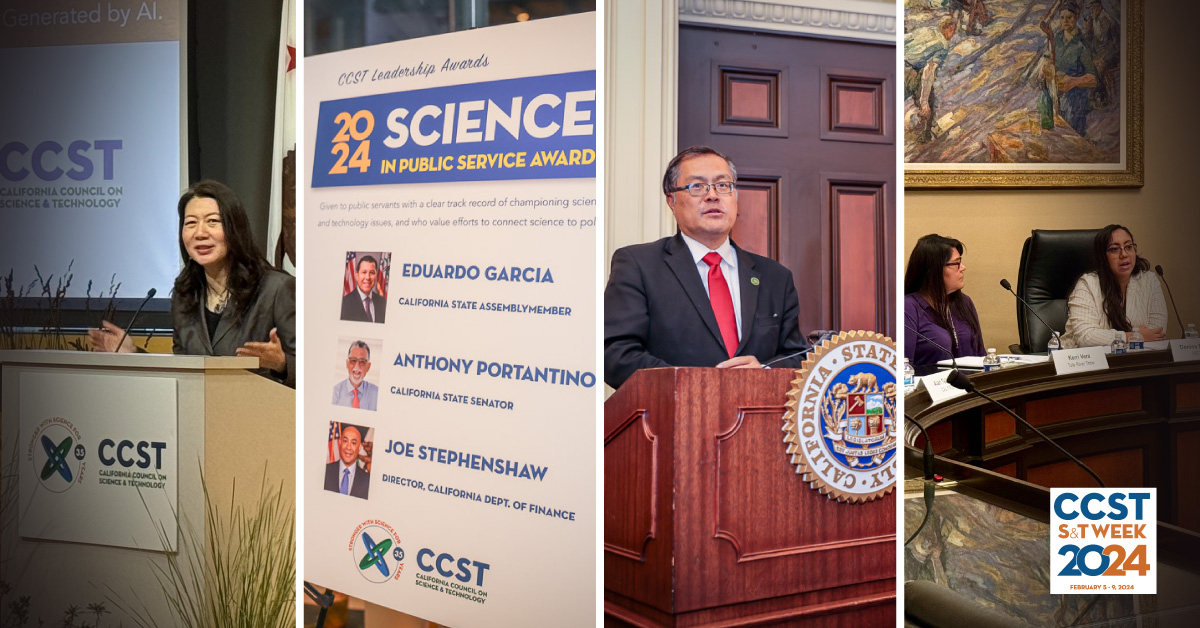Lawrence Livermore’s iCHIP Project Simulates Human Physiology and Changes the Game
September 8, 2016 | CCST Newsroom, Press Releases | Contact: M. Daniel Decillis

California is the leading biomedical state in the country, with a biomedical industry that generates more than $100 billion a year. No other state comes close in terms of employment or revenue in this sector. But there are significant costs and obstacles to developing pharmaceutical products for human use, as animal and human trials are costly and pose potential risks to participants. If researchers could predict the impacts of potentially harmful chemicals, viruses or drugs on human beings without resorting to live test subjects, it could transform the industry. A project at Lawrence Livermore National Laboratory, iCHIP, aims to do just that.
The iCHIP (in-vitro Chip-based Human Investigational Platform) is intended as a miniature external replication of the human body, integrating biology and engineering with a combination of microfluidics and multi-electrode arrays. It reproduces major biological systems vital to life, including the the central nervous system (brain), peripheral nervous system, the blood-brain barrier, and the heart.
“Fully functional human-on-chip technology will represent a paradigm shift in generating more human relevant data,” said Elizabeth Wheeler, iCHIP principal investigator. “Having a system that accurately reflects human physiology will allow scientists to develop new therapies, investigate the impact of exposure to chemicals and toxins, and discover new biological mechanisms without relying on animal testing.”
iCHIP combines actual cells with devices capable of sustaining them and recording their activity. For example, to study the brain, primary neurons are placed onto a microelectrode array device. After the cells grow, chemicals can be introduced and the electrical activity from the neurons recorded. Multiple brain cell types can be supported on the same device, offering an unprecedented level of complexity in testing reactions. Blood flow through the brain is simulated with tubes and microfluidic chips. Microelectrodes record electrical signals from the cells, allowing researchers to determine how the cells are responding to stimuli non-invasively. Microscopic images can be acquired at the same time to monitor changes in intracellular ion concentrations, such as calcium. The result is a uniquely non-invasive way to monitor cell health and function in reaction to chemical stimuli.
While the ultimate goal of the project is to fully represent the human body, the research team is currently focusing on integrating a functional blood brain barrier with the brain, which they aim to complete within the next three years. The individual systems being developed should have practical applications long before an integrated human simulation is complete.
“A fully developed validated human-on-a-chip is a few years off,” said Kris Kulp, lead biologist on the iCHIP project. “However even at the individual systems stage, the iCHIP simulator can be used in an applied setting. The blood brain barrier system should be available for scientific research and/or testing within three years.”
The potential implications of iCHIP technology are significant for the academic and industry research communities alike. The iCHIP project has already done some collaboration with the private sector (AnaBios) and is beginning a research collaboration with Stanford University.
“There’s a natural extension to the private sector with iCHIP research,” said Wheeler. “Areas ranging from pharmaceuticals, consumer health, and even personalized health may potentially benefit from the iCHIP.”
M. Daniel DeCillis, PhD is the Spotlight editor and a Senior Research Associate at the California Council on Science and Technology.
The California Council on Science and Technology (CCST) is a nonpartisan, not-for-profit organization established via the California State Assembly – making California’s policies stronger with science since 1988. CCST provides California’s Executive and Legislative Branches with independent scientific advice, convening a diverse network of expertise spanning California’s public and private universities, community colleges, and Federal research laboratories.
- Lawrence Livermore National Laboratory
- Stanford University
Follow CCST on Facebook, on Twitter, and on LinkedIn.
CCST Sustaining Institutions and Affiliates Featured: Lawrence Livermore National Laboratory; Stanford University






